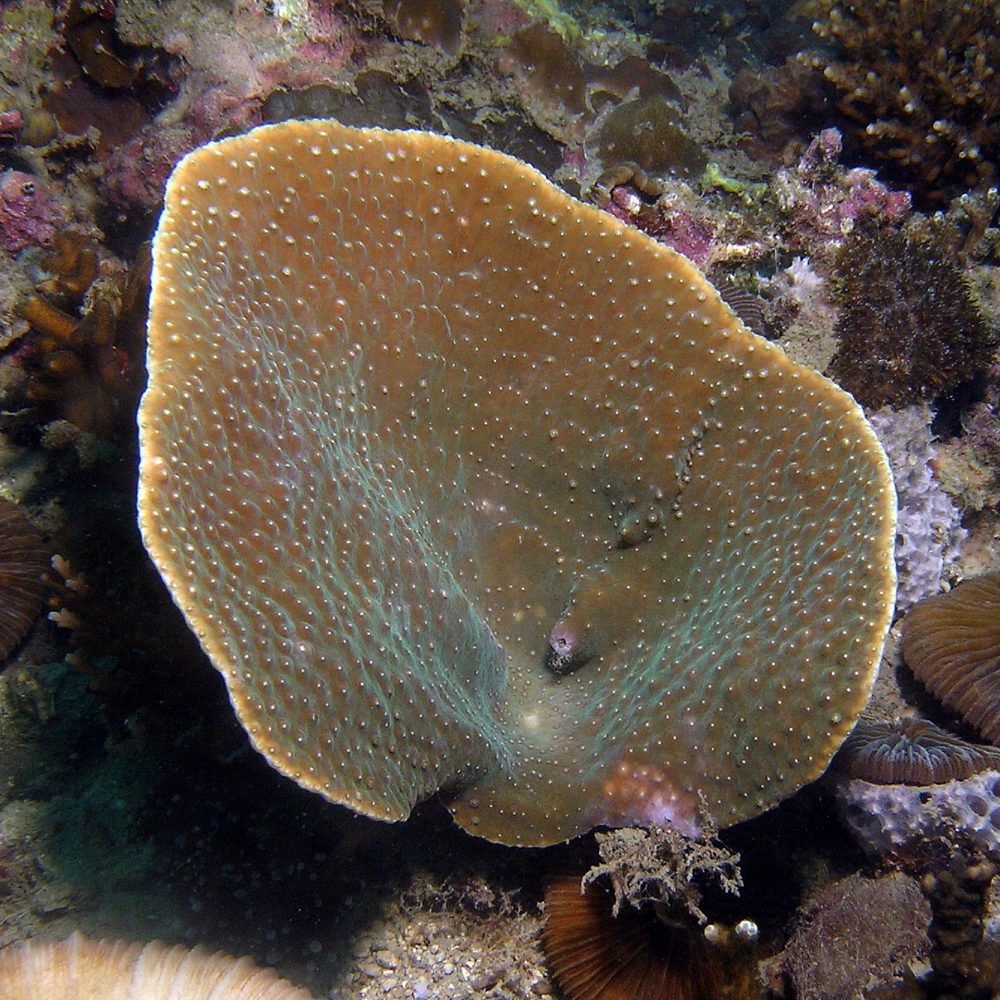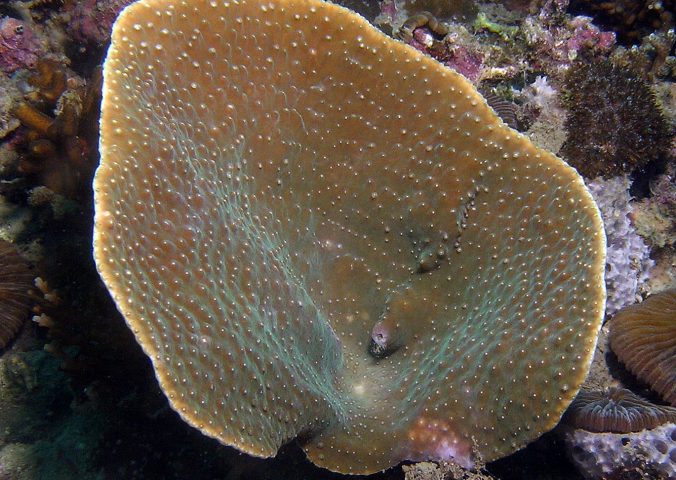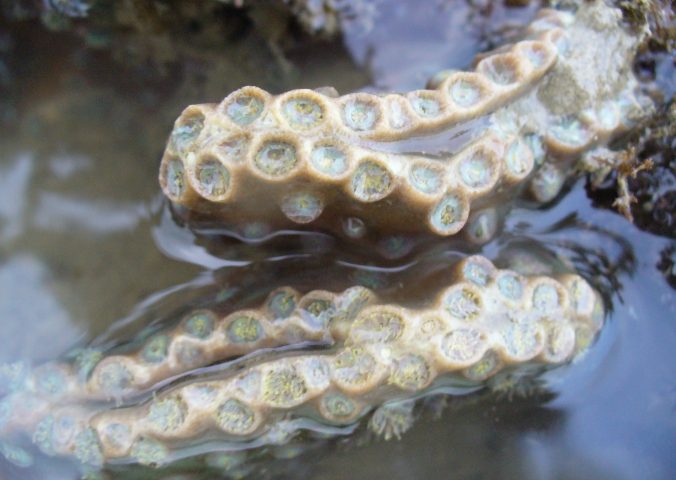About
Turbinaria bifrons is a reef building coral whose colonies are formed of numerous, folded plates.
This species can reach a metre in length and larger colonies tend to have an increasingly contorted structure to their plates. Unusually for its genus, Turbinaria bifrons colonies are bifacial, meaning that fleshy coral polyps extend from both faces of the colonies plates to feed.
Turbinaria bifrons’ specific population trends are unknown however it is thought to be declining along with many other coral species on reefs around the world as it suffered extensive bleaching and high mortality during the 1998 global bleaching event.
- Order: Scleractinia
- Family: Dendrophylliidae
- Trend: unknown
- Depth Range (m): 2 - 25
EDGE Score
Distribution
This species is found in shallow, tropical waters across the central and west Indo-Pacific, off the tropical shores of Australia and north to the South China Sea.
Habitat and Ecology
T.bifrons prefers shallow and rocky foreshores and subtropical locations where their maximum colony size is approximately 1m in diameter.
Turbinaria corals are an ecologically important species which provide significant proportions of the benthic cover on many reef habitats. In reef building, or scleractinian corals, individual polyps sequester and excrete calcium carbonate as an external skeleton for protection. Specific oceanic conditions are required for polyps to synthesize and exude calcium carbonate.


